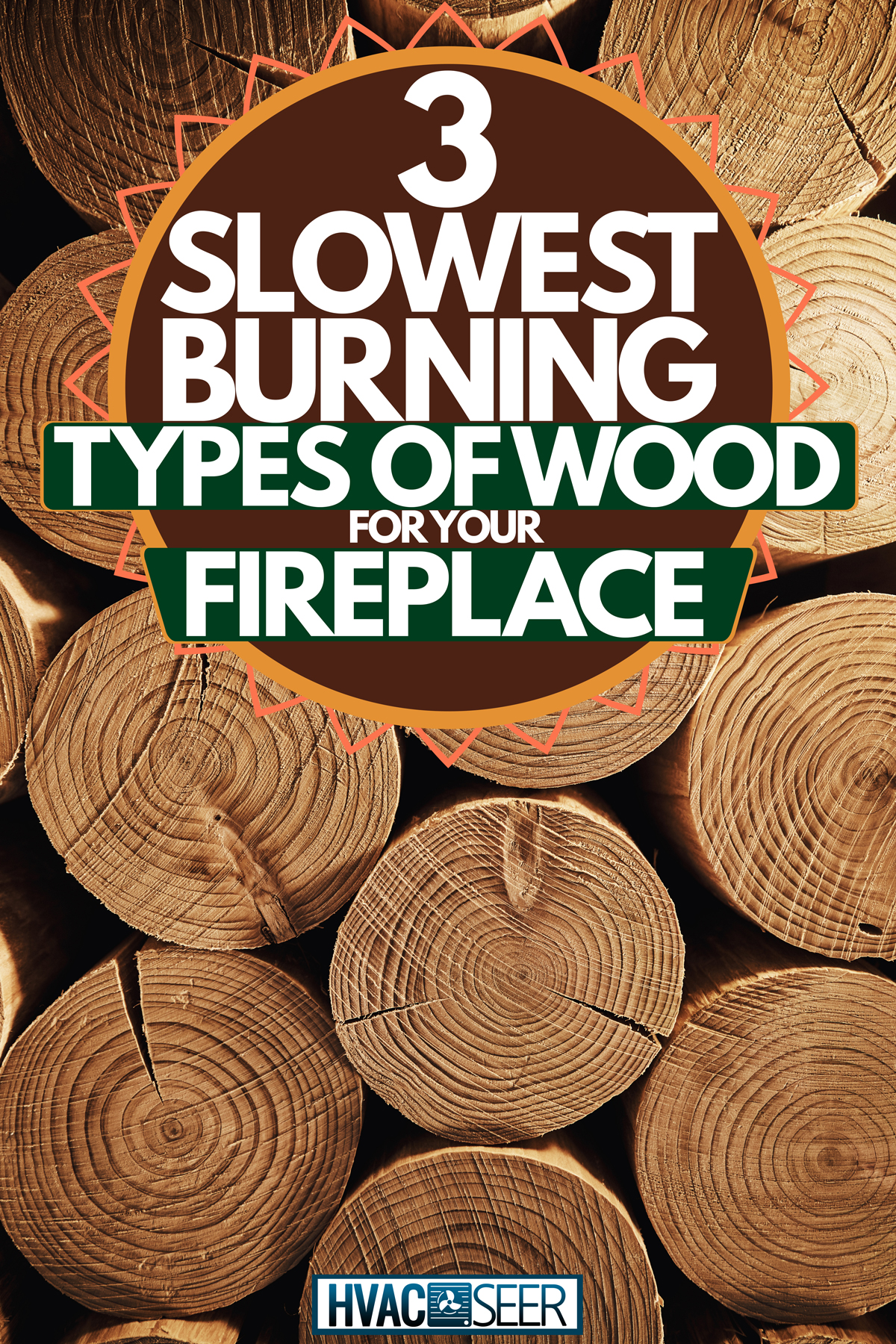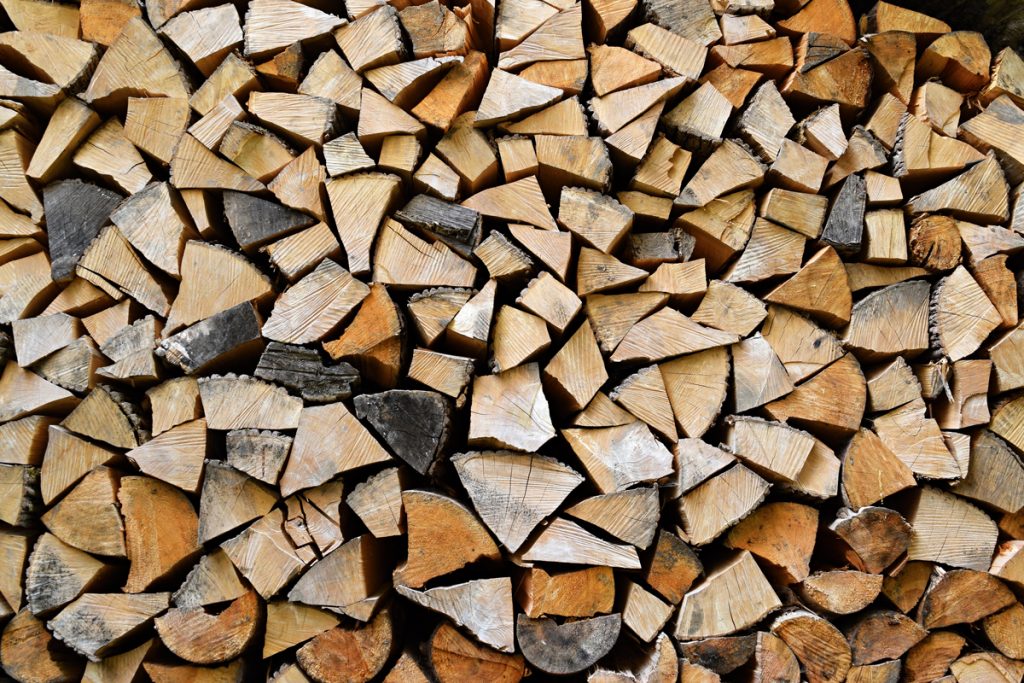In order to maximize the time that you spend relaxing in front of your fireplace during the colder months, you’ll want to choose the right type of wood. Choosing the right kind of wood can reduce the frequency and amount of wood you have to add in order to keep your fire burning. We've done the research to inform you of what the slowest burning woods are and other useful information.
There are a lot of choices when it comes to wood for your fireplace. These are the best options for slow-burning wood:
- Oak
- Hard Maple
- Ash
These three hardwoods make for some of the best firewood. But what other things need to be considered? How else can you make your firewood burn slower? In this guide, we'll cover these questions and more. Just keep reading!

Using Hardwoods In Your Fireplace

Oak, hard maple, and ash are classified as hardwoods. Hardwoods are dense and allow them to burn slower while giving off a lot of heat. Other popular types of wood used in fireplaces such as pine, spruce, and cedar are considered softwoods, which burn more quickly than hardwoods and do not produce as much heat.
Let's discuss the use of hardwoods in the fireplace in further detail:
Oak
When seasoned (a fancier term for dried) appropriately, oak burns very slowly and produces a lot of heat. It is one of the most efficiently burning woods.
Hard Maple
Hard maple burns very slowly when it has been correctly seasoned. It seasons rather quickly because of its low density. Additionally, it burns off a nice aroma.
Ash
Ash is another slow-burning wood that does not take as long to season as other types of wood due to its low moisture content. It burns evenly and slowly with a good amount of heat.
While hardwoods burn slower than softwoods, they can pose some difficulty when starting a fire. Putting some softwoods in with the hardwoods to ignite the fire can be helpful. Once the fire is going, you can use hardwood to keep it fueled.
Another minor drawback to burning hardwoods is that because they burn slower, the smoke from the fire stays in the chimney longer, which can lead to more buildup. However, if you have your chimney cleaned once a year as recommended, this should not be a problem.
Seasoning Firewood
Both types, hardwoods and softwoods, should be seasoned for at least a year after being cut for firewood. If you purchase firewood, you can buy wood that has already been seasoned. After obtaining your firewood, it is important to make sure that it is stored correctly. Firewood should be stored in an area that is dry and has good air circulation whenever possible.
If firewood is stored outside, it can be covered with a tarp on top to protect it from rain or snow but the sides should not be covered to allow for air circulation. It should also be stored off the ground so that the moisture from the ground does not seep into the wood.
In addition to choosing the right type of wood for your fire, there are other factors to consider in order to get the most out of your fireplace. Below are some questions and helpful answers.
How Do You Make Your Fireplace Burn Slower?

How you stack the wood in your fireplace can make a difference in how fast or slow the fire burns. Loosely stacked, smaller pieces of wood in a crosswise pattern will burn quicker than large pieces of wood that are stacked tightly.
Another factor that impacts how fast a fire burns is the amount of air that it is getting. This can be difficult to control for open fireplaces, but closing air vents and windows in the room or adjusting the chimney damper can help reduce the amount of air getting to the fire so that it burns slower.
Does Wet Firewood Burn Slowly?
Wet firewood will burn slowly but the side effects from burning wet wood do not seem to be worth the slower burn time. Trying to start a fire with wet firewood will pose a challenge. And once it does ignite, the fire will be difficult to maintain.
Furthermore, wet firewood does not produce as much heat as dry wood since the fire will be burning off the moisture in the wood. It is estimated that seasoned wood gives off about fifty percent more heat than unseasoned wood. In addition, wet firewood creates more smoke which can be a health hazard, especially for those with respiratory conditions.
Finally, the combination of smoke and moisture from wet firewood creates additional buildup in the chimney flue, creating a fire hazard if it is not cleaned out properly. Using properly seasoned firewood is your best bet to reduce the likelihood of the problems associated with trying to burn wet firewood.
Why Does Your Firewood Not Burn?
Firewood that does not burn contains too much moisture and has not been seasoned enough or at all. The energy from the fire is spent trying to evaporate the water in the wood rather than burning it. In order to catch fire and burn correctly, wood needs to have less than 20% moisture content.
A tool called a moisture meter can be useful when trying to identify how much moisture is in a piece of wood.
Click here to see more on Amazon.
If a moisture meter is not available, hitting two pieces of firewood together that are properly seasoned should result in a ‘clacking’ noise rather than a dense ‘thudding’ sound. Seasoned wood will also be significantly lighter than wood that has not has enough drying time.
Enjoy Cozying Up By The Fire!
Hopefully this article provided you with useful information and tips that you can use to get the most out of your fireplace. Using properly stored, seasoned hardwoods can result in a longer burning fire that produces more heat during colder weather.

